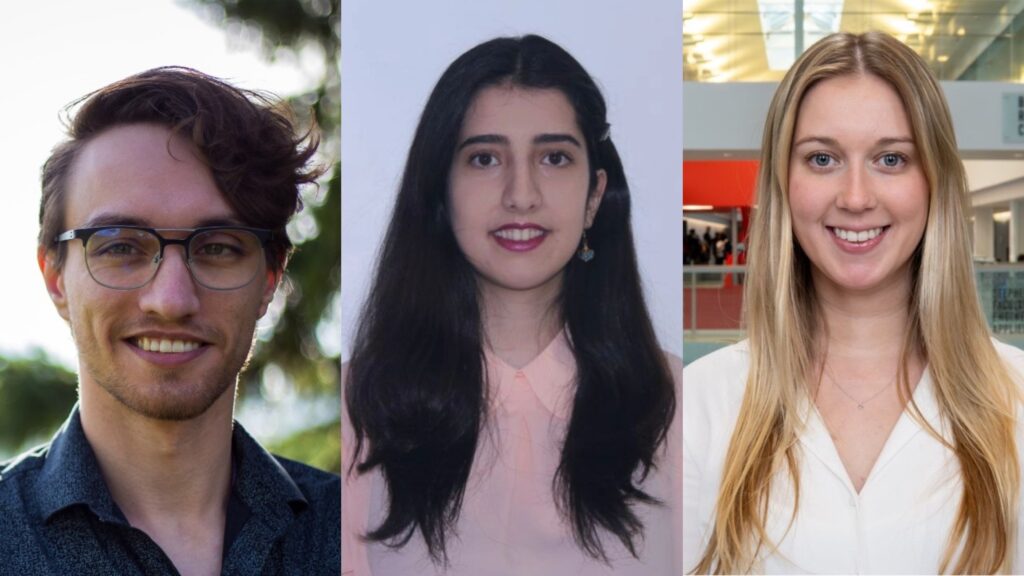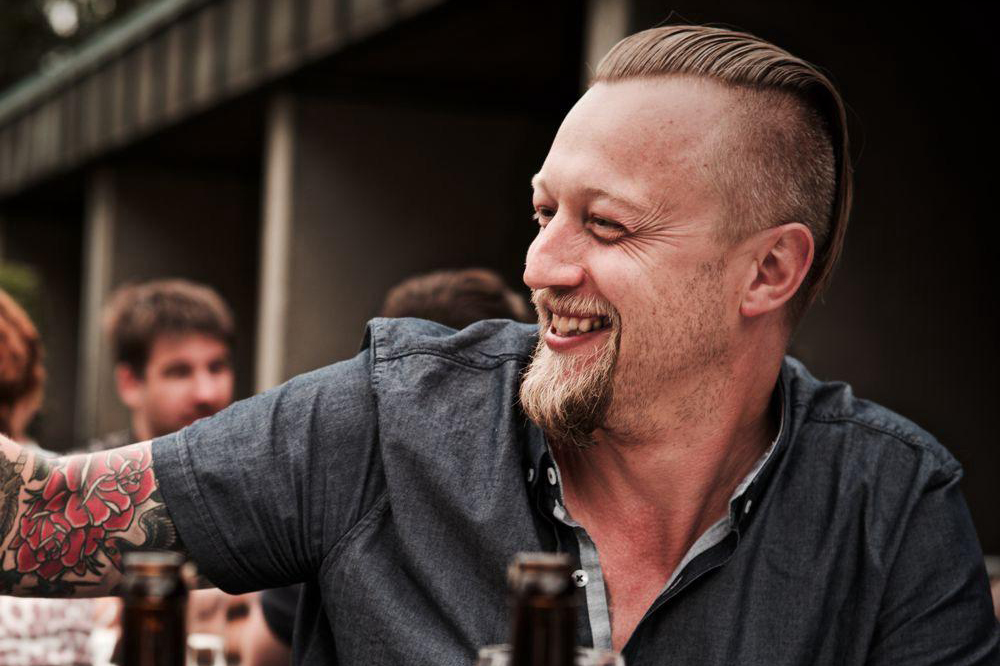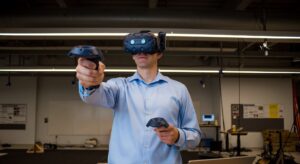When was the last time you caught a ball, typed an email, or crossed the street? Did you think about this action, or was it simply something you did? These movements are second nature to us, but each one involves complex interactions between sensory input, neural noise and split-second decision making.
How the brain transforms perception into action drives the work of Dr. Gunnar Blohm and the multidisciplinary team in his lab. Dr. Blohm is Professor for Computational Neuroscience at Queen’s University, as well as the Vice-Director (Queen’s) of Connected Minds. Members of his lab combine physics, psychology and mathematics to investigate how the brain learns to move, adapt, and make decisions.
“Sensory-motor processes are the things to study because they are the reason the brain evolved — to use sensation, or sensory inputs, to sense and act on the world,” says Dr. Blohm.
Dr. Blohm began his academic career with a Master’s degree in physics, but pivoted to neuroscience during his PhD, drawn in by the challenge of understanding living systems. For Dr. Blohm, the mission behind his research is clear: to uncover the brain’s most fundamental mechanisms. As he explains, “through the study of sensory motor control, [researchers] can uncover fundamental principles and mechanisms of brain functions at various scales [from] behaviour to how the brain is set up.”
In practice, how does this mission shape the research questions in his lab? It tends to attract a diverse group of researchers from different fields. While the students in Dr. Blohm’s lab may be investigating different parts of a system (for instance, from normative to behavioural modelling) they all seek to answer the same fundamental question: how does the brain adapt, decide, and act in the world?
At the same time, building a lab isn’t just about answering questions. It’s also about training students to ask better ones. “Graduate school is training through research,” Dr. Blohm says. He hopes the main skill his students take away from their time in the lab is critical thinking: learning how to ground ideas in evidence, assess the logic behind different scientific approaches, and analyze data in a systematic way. He also encourages students to follow their passions, pursue unconventional questions, and collaborate across disciplines.
3 Students, 3 Paths, 1 Mission

For Connor, understanding the brain begins with pen and paper. As a mathematics PhD student, he is investigating the idea that neurons are not simply passing along signals but acting as decision-makers with each neuron operating with limited information in a complex network. Connor’s research uses mathematical frameworks from multi-agent systems and reinforcement learning to model the brain as a decentralized network. His research asks how neurons know what to do in such a noisy environment. It’s a question that mirrors problems in economics and game theory, fields where individual agents make choices based on sparse and sometimes conflicting information.
Connor chose to work with Dr. Blohm after seeing the diversity of research in his lab. “[Dr. Blohm] really emphasizes the importance of collaboration and multi-disciplinary work for answering questions about the brain,” he explains. This openness led to co-supervision of Connor’s thesis with Dr. Serdar Yüksel, a mathematician at Queen’s. Their project now sits at the intersection of neuroscience, systems theory, and machine learning. “It’s exciting to have an idea,” Connor says, “and to realize that not many people are having the same idea.”
While Connor builds mathematical theories of how neurons communicate, Arefeh is focused on how humans move. With a background in electrical engineering and control systems, Arefeh’s research blends machine learning, biomechanics, and neuroscience to answer one question: how can we detect abnormal movement patterns, and possibly diagnose disease, just by analyzing video?
“How do we distinguish different movements, extract primitives, and then, from those features, distinguish abnormality?” she explains. Her project uses machine learning tools to analyze simple, even smartphone-recorded, videos. She extracts 3D pose data from these videos and identifies movement primitives—subtle, repeated patterns in how we walk or gesture. The long-term goal is to create a tool that flags movement irregularities, prompting early screenings or medical follow-ups. “Like, hey,” she says, “maybe your grandma’s walk looks a little different—maybe she should consult with a physician.”
Finally, while Connor builds theoretical frameworks and Arefeh designs practical tools, Sydney’s work unfolds in real time, with participants adapting to vision loss as her experiment unfolds. Her research investigates how people respond to central vision loss, such as by age-related macular degeneration (AMD), and whether the brain can rewire itself to compensate.
Using eye-tracking, Sydney’s experiments mimic a central blind spot on screen, forcing participants to rely on their peripheral vision to follow moving targets and track motion. Over the course of several sessions, she observes whether participants develop a new point of focus, known as a preferred retinal locus (PRL). “We already know that some AMD patients can develop a PRL in place of their absent fovea in tasks such as reading,” she explains. “However, it’s unknown if and how this PRL can be used in tracking [moving] targets.”
Her path to the lab was simple: “‘I’ve been in the lab since my [undergraduate] 4th year thesis project,” she says. “I read about the research in this lab and thought it would really align with my interests. I’ve been here ever since!”
Conclusion: The Lab, in Practice
These PhD students work on diverse problems, yet all of their research is grounded in a core mission and philosophy, asking: how does the brain adapt, decide, and act in the world? And how do we train scientists to answer this question in a way that promotes curiosity and critical thinking in equal measure? As Dr. Blohm explains, he wants to give his students “the tools and critical thinking and perspectives [to find] their own paths.”
The work coming out of Dr. Blohm’s lab reminds us that the future of neuroscience lies in embracing uncertainty and complexity. Whether it’s a neuron making a choice, a body moving abnormally, or a brain adapting to vision loss, the questions that matter are rarely the easiest ones to answer. What connects these researchers isn’t a single method or problem, but a philosophy that progress begins with curiosity, collaboration, and the courage to ask meaningful questions.
As Dr. Blohm explains, “the future of science lies in complex science.”



